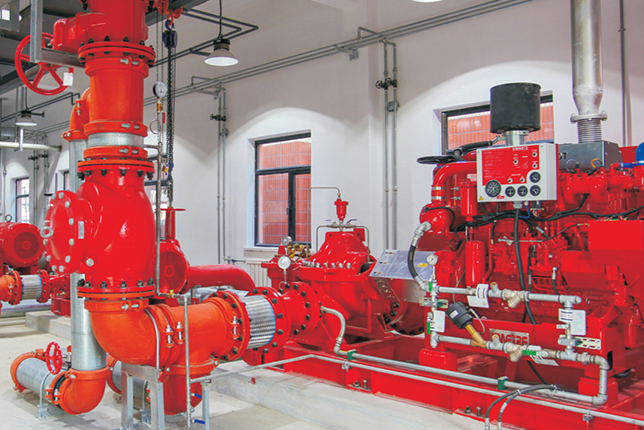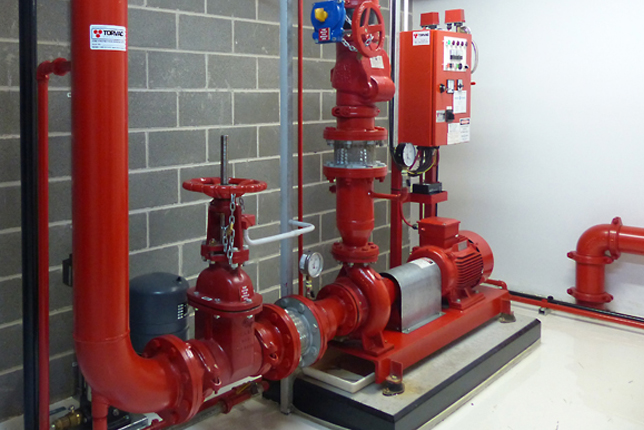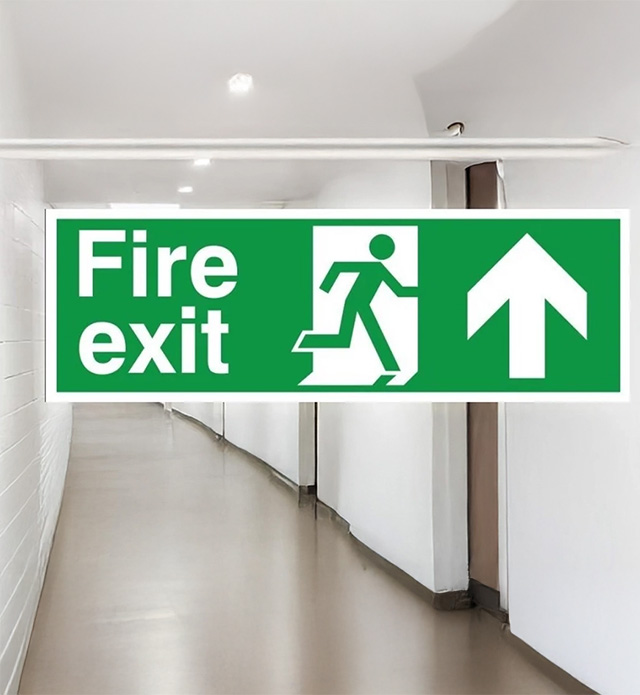Fire Fighting System
Introduction to Fire Fighting Systems
A Fire Fighting System is a crucial safety mechanism designed to detect, control, and extinguish fires in buildings, industrial facilities, and public spaces. It consists of various components, including fire alarms, sprinklers, fire extinguishers, hydrants, and suppression systems like foam or gas-based systems. These systems work together to minimize fire damage, protect lives, and ensure property safety.
Components and Importance
Fire detection sensors and alarm systems provide early warnings, while water-based or chemical suppression methods help control and eliminate fires before they spread. Regular maintenance and inspections are essential to ensure the system functions efficiently in case of emergencies. Compliance with fire safety regulations and standards is necessary to enhance overall safety and preparedness.
Different technologies to extinguish fire depending on the occupancy and type of fire is as follows.
Standards Followed
The Indian Standards (IS) for fire safety and gas suppression systems are established by the Bureau of Indian Standards (BIS) to ensure the safety and reliability of fire protection mechanisms. These standards cover various aspects, including design, installation, maintenance, and performance of fire suppression systems. IS 15105:2002 is a key standard related to gas-based fire suppression, ensuring compliance with safety protocols in commercial and industrial applications.
The National Building Code (NBC) of India provides comprehensive guidelines for fire safety, including fire suppression systems. It categorizes buildings based on occupancy and prescribes the necessary fire protection measures. Part 4 of the NBC specifically addresses fire and life safety, recommending gas suppression systems for areas where water-based suppression is unsuitable, such as data centers and electrical rooms.
The National Fire Protection Association (NFPA) is a globally recognized organization that develops fire safety standards, including those for gas suppression systems. NFPA 2001 is a crucial standard governing clean agent fire suppression systems, ensuring effective fire control without damaging sensitive equipment. NFPA standards are widely adopted for their rigorous safety and performance requirements.
The British Standards (BS) set by the British Standards Institution (BSI) provide fire protection guidelines widely used in the UK and internationally. BS EN 15004 is a significant standard covering gaseous fire suppression systems, aligning with international best practices. These standards ensure that suppression systems meet high safety, reliability, and environmental impact criteria.
FM Global (Factory Mutual) and UL (Underwriters Laboratories) are independent organizations that certify fire suppression systems for quality, reliability, and effectiveness. FM-approved and UL-listed gas suppression systems meet stringent testing criteria, ensuring they function efficiently in real-world fire scenarios. Compliance with these certifications assures businesses and industries of the highest safety and performance standards.
Service Industry
- Commercial
- Residential
- Institutional
- Assembly
- Business
- Hospital
- Educational
- Industrial
- Mercantile
The above inclusive of the Office building ,Shopping centers, Mall, Auditorium, Banks, Hotels, Residences, Laboratories, Hospitals, Colleges, Dormitory blocks, Factories, Ware houses, Server room, Electrical equipment blocks.
Sprinkler System (Wet & Dry Type)
A sprinkler system is an essential fire suppression mechanism designed to control and extinguish fires automatically. It consists of two main types: wet and dry systems. A wet sprinkler system is the most common type, where water is constantly stored in the pipes and released immediately when a sprinkler head is activated by heat. This system is ideal for buildings where temperatures remain above freezing. In contrast, a dry sprinkler system is used in areas prone to freezing temperatures, such as unheated warehouses or parking garages. Instead of water, the pipes are filled with pressurized air or nitrogen, which prevents freezing. When a fire triggers a sprinkler head, the air is released, allowing water to flow and suppress the fire. Both systems play a crucial role in fire protection, ensuring rapid response and minimizing fire damage.
Sprinkler System (Wet & Dry Type)

Hydrant System: Internal & External (Wet & Dry Type)

Hydrant System: Internal & External (Wet & Dry Type)
A Hydrant System is an essential part of fire protection, designed to supply water for firefighting operations. It is categorized into internal and external systems, which can be either wet or dry types. Internal hydrants are installed within buildings, providing a ready water source for firefighters, while external hydrants are located outside, ensuring accessibility for fire trucks and emergency responders. Wet hydrant systems are constantly filled with pressurized water, making them ideal for immediate use in high-risk areas. In contrast, dry hydrant systems remain empty until activated, preventing water stagnation and freezing in cold climates. These systems play a vital role in fire suppression by ensuring a reliable and accessible water supply in emergencies.
Pump Room
A Pump Room is a critical component of a building’s mechanical and fire protection systems, housing essential pumps and equipment responsible for water distribution, pressure regulation, and fire suppression. In fire protection systems, the pump room contains fire pumps, jockey pumps, and controllers, ensuring adequate water pressure for sprinklers, hydrants, and hose reels during emergencies. These pumps are typically powered by electric motors or diesel engines to provide redundancy in case of power failure. Proper ventilation, routine maintenance, and compliance with safety standards are necessary to ensure the reliability and efficiency of the pump room, preventing operational failures that could compromise fire safety and water supply systems.
Pump Room

Water Mist System

Water Mist System
A Water Mist System is an advanced fire suppression system that uses fine water droplets to control, suppress, or extinguish fires. The system operates by creating a mist of microscopic water particles, which rapidly absorb heat, displace oxygen, and cool the fire-affected area. Compared to traditional sprinkler systems, water mist requires significantly less water while being highly effective in reducing fire damage. It is widely used in environments where water-sensitive equipment or limited water supply is a concern, such as data centers, hospitals, marine vessels, and industrial facilities. The system’s ability to control different types of fires, including electrical and flammable liquid fires, makes it a versatile and eco-friendly fire protection solution.
Pre Action System
A Pre-Action System is a specialized fire sprinkler system designed to prevent accidental water discharge while providing effective fire protection. It consists of a two-step activation process, requiring both a fire detection system to sense heat or smoke and a secondary trigger, such as a manual release or further temperature increase, to open the sprinkler heads. This system is commonly used in areas with sensitive equipment, such as data centers, museums, and libraries, where unintended water damage could be costly. By combining the reliability of a traditional sprinkler system with added control, pre-action systems help reduce false activations while ensuring quick response during actual fire emergencies.
Pre Action System

Scope of our Work:
- Preliminary site visit and discussion with Architect / Client and project feasibility survey.
- Necessary NOC drawings with document (No objection certificate). (For base building projects).
- Preparation of Preliminary design Brief (DBR) with Schematic.
- Preparation of Preliminary designs for the Client / Architects approval of comments if any, by way of drawings to explain the general planning and nature of works with the basic dimensions, inclusive of basic requirement for the safety & security systems shafts etc and other features required for services. Obtaining the approval of the Client / Architect.
- Making Technical specification, Bill of Quantity & Tender Layout (For better understanding of our requirement).
- Provided the Estimated Bill of quantity for client to get idea for budgeting.
- Preparing & floating the tender enquiry with tender drawing for system.
- Scrutinizing & comparing the offers of various bidders.
- Providing assistance to client in negotiation and finalizing of the contractors.
- Coordinating the overall designing with other services i.e. HVAC, ELECTRICAL, FIRE FIGHTING & LOW CURRENT systems and preparing the detail section which will be useful for Vendor & PMC to run the project in smooth way and without any issues of installation on site.
- Our support will extend unto preparation of the above false ceiling coordination & False ceiling coordination layouts.
- Describe the requirement of our system to the vendor in the kick off meeting with the Good for construction layout (GFC).
- Checking and approving the shop layout submitted by the vendors.
- Periodical visits to the site of work during the execution to ensure that the intent of the drawings is duly carried out and that technical features envisaged by the consultant are properly executed.
- Generate the site visit report with proper snap shots to reduce the uncertainty of installation. This will help to avoid rework during the commissioning stage.
- Provide necessary test certificate format and witnessing the performance test for all the involved systems.
- We ensure to obtain ideal Handing over procedure.




